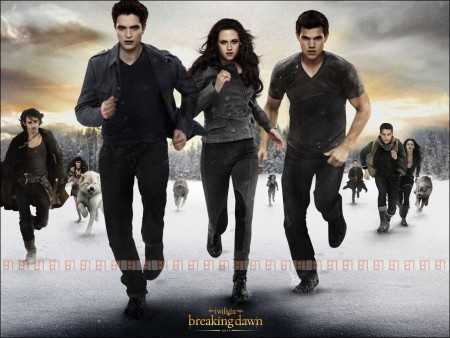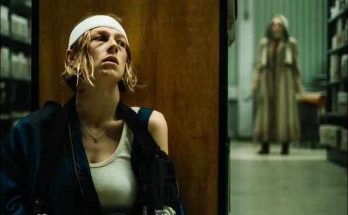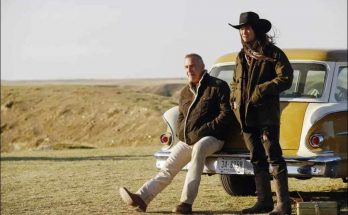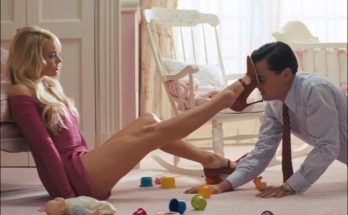Principal photography on The Twilight Saga: Breaking Dawn – Part 1 began on November 7, 2010 in Rio de Janeiro, Brazil and shooting continued on the film, concurrently with production of The Twilight Saga: Breaking Dawn – Part 2, for six months in three countries. The multi-national crew shot primarily in and around: Rio de Janeiro and Paraty, Brazil; Baton Rouge and New Orleans, Louisiana, USA; as well as Vancouver, Vancouver Island, and Squamish, BC, Canada – all creating the world of Forks, Washington; Isle Esme, Brazil; and Volterra, Italy. (Due to the global scope of particularly the second film, multiple countries were recreated in the various locations.) Additional shots for the Brazilian honeymoon sequence for Part 1 took place in the U.S. Virgin Islands.
The Twilight Saga: Breaking Dawn – Part 1 begins as an intimate story about a wedding and a honeymoon, the details of which are so breathlessly debated, anticipated, and sought after by Twilight devotees that extreme security measures had to be adopted to keep them secret. The resulting pregnancy ignites so much controversy that the film expands in scope with both obvious, as well as surprising, visual effects challenges and an explosive third act action sequence where the Cullens and the wolves openly battle each other for the first time. With much of the film’s narrative taking place inside and outside the Cullen house, filmmakers built two full-scale versions of the home.
While honoring the established elements of the novel and the previous three installments, filmmakers still left their interpretive mark on a contemporary love story involving humans and supernatural beings, which included several flashback and nightmare scenes. Like all Twilight films, The Twilight Saga: Breaking Dawn – Part 1 utilized many forested settings that feature the expected character specific gloom and rain, but cast and crew also faced unexpected weather anomalies that dogged the production at often remote locations throughout the extended shoot. In addition, the largest cast of the saga required an army of experts – including craftspeople in make-up, hair/wigs, contact lenses, costumes and props – to achieve the elaborate looks described in the book, details sure to be fact-checked by the eagerly waiting fans.
One Story, Two Movies
The added challenge of making two epic motion pictures, The Twilight Saga: Breaking Dawn – Part 1 and the even more ambitious The Twilight Saga: Breaking Dawn – Part 2, at the same time and in two major production centers, forced filmmakers to often concurrently prep sets many thousands of miles apart. The production set up two home bases – one in Baton Rouge, Louisiana where most of the interior shooting was completed; and the other in Vancouver, BC where most of the exterior work of the Pacific Northwest-based story was shot. The project also required a field trip to Brazil, which required yet a third production team, known as The World Unit. While the main shooting company started filming in Louisiana, crews in Canada (many returning to the franchise) were scouting remote wilderness locations and constructing the large-scale Cullen house and various other sets.
Following twenty weeks of prep, production used block shooting for efficiency in terms of locations, actor availability, looks, props, set dressing, and sets. “At the very early stages of development, we had to address all the things that create the signature of the character looks; wigs, make-up, contact lenses, and wardrobe; and then also the sets themselves. Bill and I sat down and went through the whole list, covering every character, every set, every venue, and every location,” shares co-producer Bill Bannerman.
“However, the homework that has to be resolved for Part 2 is very different from the homework that has to be resolved for the beginning of Part 1, and you had to have all those issues addressed before you start filming,” says Bannerman. “But Bill Condon is a genius – highly intellectual to the point that he’s able to comprehend every facet of production, both from a creative vision and a physical execution perspective. Bill looks at the grand canvas and understands the various colors and how you execute those elements.”
The main unit alone logged 101 shooting days. “The logistical demands of this chapter alone are high,” admits Bannerman. “The logistical demands of the two parts put together have been even greater… three countries with multiple units – main unit, second units, action units, plate units, effects units, and aerial units. We had to break it down into these dynamics just to make it a very difficult, but challenging chess game.”
“We wound up leaving only the exterior scenes to Vancouver in winter and early spring. So, that turned out to be a real challenge because we didn’t have anywhere else inside to go when it either rained or snowed, and that’s what it did most every day,” laughs Condon. “So, that turned out to be a hidden price that we paid for doing so much of the work down in Baton Rouge.”
“From the beginning, Bill Bannerman tirelessly worked out a plan for how to shoot these two movies together and in a time frame where we could split the shoot between stages (and some locations) in Louisiana, and then all of our exteriors, where we’ve always shot in the Pacific Northwest,” explains producer Wyck Godfrey. “But, it’s created other challenges. When we got to Vancouver, we didn’t have as much cover (inside work) as you would like, but it was important in terms of utilizing the tax credits in Louisiana. It was a complicated mix. Plus, your lead actress having to bounce, sometimes daily, between being human and being a vampire.”
Kristen Stewart comments, “We’ve approached the project as a whole. Everything’s being shot like one big movie, since the book is not broken up into two different stories. It’s been as confusing as anything shot out of sequence, but very long.”
“Literally some days we would film a scene from the beginning of the first movie in the morning, have lunch, and then film a scene from the end of the second movie in the afternoon. It was crazy,” comments Taylor Lautner. “All of the characters change so much from the first movie to the second. Jacob changes a ton, so it was tough to keep track of where Jacob is in his journey. But we had Bill Condon to help, as well as Stephenie and all of the cast. It was challenging, probably one of the most challenging things so far in this franchise.”
“From a creative standpoint, the nuances of it for Bill and the actors are that they each have to create their own emotional journeys for two separate movies. From a production standpoint, you’re worried about post-production on movie 1, just focusing on making sure all of the elements for movie 1 are in the can by the April wrap for a November release, and 98 percent of the elements for movie 2,” adds Godfrey.
Producers assembled a talented and celebrated core team of department heads to surround director Bill Condon to bring his vision for the final two films to the screen including: Oscar® winning director of photography Guillermo Navarro, ASC, production designer Richard Sherman, costume designer Michael Wilkinson, and returning 2nd unit director E.J. Foerster. With only a year from the start of filming to the release of the first epic film, a massive visual effects team led by Oscar® winning visual effects supervisor John Bruno, plus editor Virginia “Ginny” Katz, and Twilight Saga veterans, music composer Carter Burwell and music supervisor Alexandra Patsavas, began their work when the films were still shooting and worked tirelessly through a breakneck six-month post-production schedule to complete the first film for a November release date, marked on the calendars of millions of fans worldwide.
“For me it’s been a lot of fun to help arm Bill with a great visual team, that will take him into areas that he hasn’t gone before. This has tons of visual effects, with a more expansive palette than Bill’s worked with before. So first I wanted to make sure we got Bill an amazing director of photography and an amazing visual effects supervisor. Guillermo Navarro’s shooting the film, he’s won an Academy Award®; John Bruno’s our visual effects supervisor, he’s won an Academy Award®… we’ve pretty much stacked the deck,” says Godfrey.
“We were fortunate to get John Bruno just coming off of Avatar. I had worked with him before and he’s one of the best visual effects supervisors in the world,” states Godfrey. “He’s so knowledgeable about what can be accomplished digitally and with other techniques. Then we went after Guillermo Navarro, who is Guillermo del Toro’s cinematographer. He’s fantastic and is somebody I’ve tried to work with before and he’s never been available. The three of us went to breakfast and Guillermo spoke with such a sense of magic. Plus he understands, not only how to beautifully light and shoot two people in an intimate setting, but also how to create large environments.”
Another Twilight Saga veteran – 1st assistant director Justin Muller – returned to help organize the mammoth project. “This core group came together in the very early stages of prep and we spent a lot of weeks fine-tuning, to make sure that everybody would understand not only Bill’s vision, but ramp up his vision, to take Breaking Dawn to a whole new level. Justin is the day-to-day mechanical skipper of the ship,” explains Bannerman. “On every project, especially when you’re dealing with multiple units and multiple countries, you need an assistant director who can drive it all forward, and Justin enables me to take care of the multiple other elements that are taking place at the same time. Justin is a very well organized individual, who articulates direction, scheduling and the logistical shuffling in a way that very few people can do. It’s a very refined art to basically juggle a thousand different things and yet not drop anything. He’s able to bring together a lot of people and make them fight the same fight with the same passion and camaraderie to keep positive momentum.”
When the production moved to Canada, a large percentage of rank and file crewmembers from The Twilight Saga: New Moon and The Twilight Saga: Eclipse returned to finish the saga. “It felt like it was a family reunion, that we’d gone on recess for about two weeks and we’re all coming together after a vacation,” laughs Bannerman. “There is a trust level there too, and that’s really cool and very unlike any other project I’ve been involved with. We all protect each other, because it’s a long investment that we’ve put into these films. When you’re away from your families for long extended period of time, everybody wants to feel like they’re home, and we’ve created a great home.”
All for The Fans
“When we wrap production on Breaking Dawn, we will have completed – from start to finish – five movies in three years and three months,” reveals Godfrey. “From the first day of shooting on Twilight, to the last day of shooting on Breaking Dawn, it’s only been basically three years! That’s a pretty amazing achievement. I don’t know that any other franchise has been able to pack them in together as closely.”
“Obviously we had to do that, because vampires don’t age, but actors tend to. So, it’s been a whirlwind… those of us on the production side have spent almost two years away from home within that three years,” shares Godfrey. “It’s been frantic and exhilarating at times, draining at other times… but now that we’re shooting the last two movies, it’s the first time that we’ve actually had a little bit of nostalgia. You’ll be sitting in between set-ups reminiscing about a really wet day in Portland. Everyone’s actually taking a breath and enjoying the fact it’s coming to a close.”
When Stephenie Meyer began writing Twilight in 2003, she never imagined it would become a series of films. “Being involved with making movies is a very strange and unexpected thing,” admits Meyer. “On a day to day basis, you get used to putting on all the rain gear and going back to work, but then you take a step back and say ‘we’re making a movie that’s going to be on the big screen.’ I’m kicking back and talking to Kristen and that’s cool. You stop and think she is one of the biggest movie stars in the whole world right now, and we’re just sitting here, swapping stories. So you have that little moment of ‘wow, that’s weird.’ It’s weird today because we’re shooting the wedding. Seeing hundreds of extras getting dressed up to go to Bella and Edward’s wedding is touching. Doing this for the past three and a half years has been life changing. It’s a different experience than I was ever expecting.”
“How often do you get a chance to be part of an anomaly of this scope? Very, very rarely,” answers Bannerman. “Other than Star Wars, where else do you see a fan-base that passionately supports a franchise to the point where they’ll wait in line for five nights just to see the actors walk down a red carpet? They wait for days on end just to get tickets to early screenings, or to go to a convention where the actors sign autographs… it is unlike anything I’ve ever seen.”
“Years from now, we’re always going to look back on this filming period as being cool. The irony is we’re not allowed to talk about anything while we’re doing it,” laughs Bannerman. “We don’t want to let out the secrets, so the fans can have a fresh experience when they go to the theater. It’s been a real challenge for three years, not to tell anybody you’re working on one of the most exciting projects on the planet.”
“The fandom of these movies is unbelievable and never ceases to take me by surprise,” agrees Godfrey. “Going down to Brazil was an extraordinary experience because of the outpouring of love from the fans, they were rabid. There were at least 250 people with signs outside of Kristen and Rob’s hotel, around the clock, screaming and doing cheers. I’m sure it drives them crazy, but I keep telling them to take a step back and recognize that you may never get this unique energy again in your careers.”
While filming in Louisiana, local fans created a Facebook page called Twilight Takes Over Baton Rouge that gained nearly 10,000 followers. “In the Southern way, everyone was a little bit more reserved, and allowed the cast to go where they wanted. Baton Rouge was a little bit more controlled than it has been in Vancouver, or in bigger cities around the world, so I think somebody must have said, ‘Let them do their work here or they may never come back,’” laughs Godfrey.
“When I was 16 and Star Wars was the coolest thing, the Internet and the viral world didn’t exist,” comments Bannerman. “You didn’t know about anything until the movie was released. Now, because of the multimedia platforms and the amount of information that’s out there, the fans gets so much information, whether it’s intentionally disclosed or not, and that puts more of a spotlight on what we’re doing. I’ve never dealt with this level of fan-demonium on any other project… the excitement, the media attention, and the hype… that comes with this anomaly known as Twilight.”
Bannerman adds, “The level of attention is unique, but it does cause me to put a lot of energy into protecting the working environment. When you have a 400-person crew and a cast that ranges anywhere from two to fifty or more on a daily basis, it’s a very big world. So as we move from location to location and country to country, it becomes a challenge into itself to create a world where we can focus on the task at hand, without disrespecting the fans who embrace this franchise.”
With shooting on the epic saga drawing to a close, filmmakers continued to feel responsible to the fans expectations. “The journey that Bella takes into the vampire world holds a lot of surprises and wonder. It is a rollercoaster of excitement for the fans anticipating what would it be like to feel the bite. What does she feel as the venom works through her body? On every level, they’re going to be so satisfied, but they will want more,” comments Bannerman.
“One of the interesting things about making a Twilight movie is so many people know this material so well, that you take any decision to change something very seriously,” comments Condon. “In the editing it becomes more complicated to do what happens in the normal process of putting together a movie, which is to streamline. There are a number of scenes that hit the editing room floor that are going to be on the DVD. Some are favorite fan moments – the fun snarking back and forth between Jacob and Rosalie that ends with him throwing a hot dog in her hair. You hope people understand that brilliant moments from the novel that we put in the script and shot because the fans love them, and yet ultimately they just don’t fit in the film. We had over 15 minutes worth of that on this movie. But you really have to weigh the fan expectation more than you would on another movie.”
As Part 1 is about to be in theatres, Condon is deeply involved in post work on Part 2. “For me, it’s been an intense experience for about a year and a half now. Jumping in with developing the scripts, prepping two movies, and shooting the two movies. Then, a very tight schedule to get the first movie released,” shares Condon. “With the second film, the scope is much bigger and we’ll have the culmination to all of it… we cross over into the life of a vampire.”
The Twilight Saga: Breaking Dawn wrapped principal photography just before dawn the morning of April 23, 2011 on a St. Thomas beach in the Caribbean. Second unit stunt work wrapped at the Stawamus Chief Provincial Park just south of Squamish on April 29, 2011, with the aerial unit cherry-picking a handful of ideal weather days in the weeks that followed to complete shooting on the saga.
The Twilight Saga: Breaking Dawn – Part 1 is in theatres on Friday, November 18, 2011.
The Twilight Saga: Breaking Dawn – Part 2 is in theatres on Friday, November 16, 2012.
Read the Full Production Notes for The Twilight Saga: Breaking Dawn Part 1
Visits: 103




